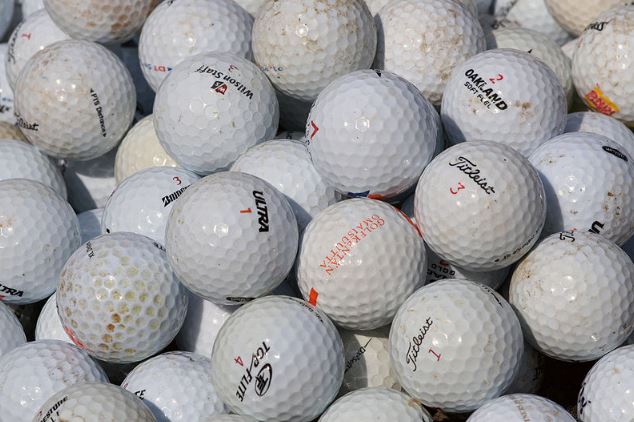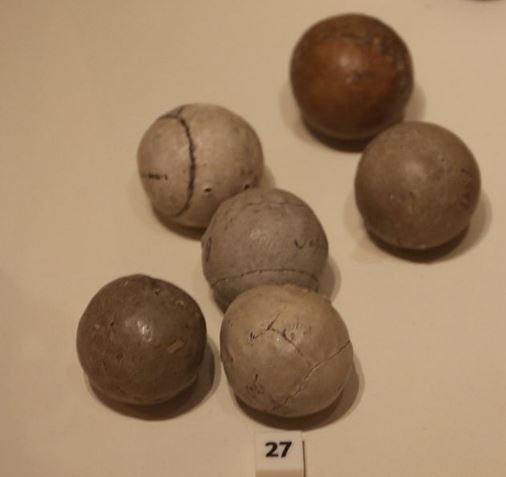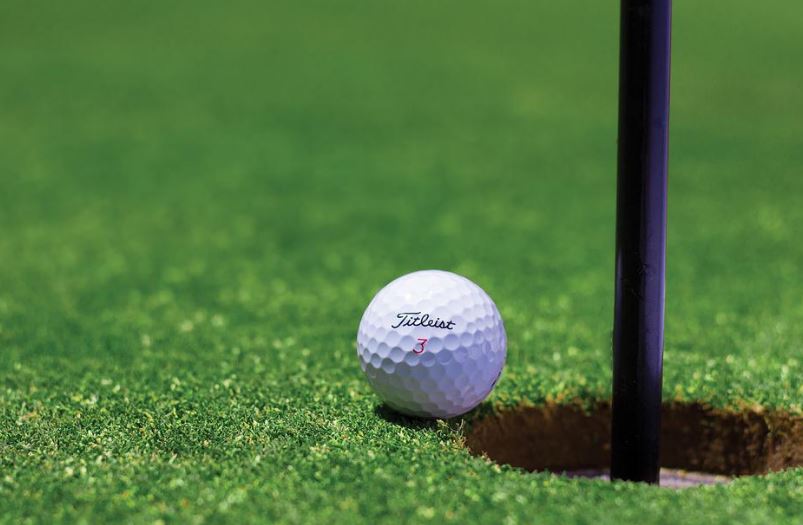Golf is one of the most popular sports in the world. It’s a game played on the most beautiful grounds. It offers more than fun and leisure – it helps build character and inspires a deep desire for improvement from its most committed players. But at its very core, golf remains about a ball and a club.
The modern golf ball has undergone many transformations to get to where it is today. It has evolved a lot of times throughout history, but there are some distinct stages. Learn here how golf balls have changed over the years.
Wooden Golf Balls
Harboring its roots in the early 1400s on the eastern coast of Scotland, wooden golf balls are presumed to be the oldest golf balls used for the game. Many accounts show that the earliest games of golf were played with a wooden ball, while some records refute it, saying that these wooden balls were used in early games similar to golf. The evidence of the use of wooden golf balls is scarce, hence, the debate around whether they were used in the early games of golf.
These wooden golf balls were most likely made of hardwoods like box root or beech and other similar hardwoods. Wooden clubs were a golf club of choice, which would have made the friendly game of golf a jarring experience.
Hairy Golf Balls
By 1486, the Scottish received a hairy golf ball imported from the Netherlands. This ball was a hand-sewn, round leather ball filled with cows’ hair or some straw. These balls continued to be used by some even after the introduction of the Featherie golf ball in 1618 because they were less expensive. Later on, it became known as the “common ball.” These hairy golf balls were used until the early 18th century.
Featherie Golf Balls
The “featherie” golf ball was introduced in 1816, which was made similar to the hairy golf balls but filled with boiled goose or chicken feathers, then stitched up and painted. Featherie golf balls were expensive to create and could be easily damaged, so only the privileged could afford to use them.
The featherie golf balls were manufactured while the feathers and the leather were still wet. The feathers expand as the leather shrinks while drying to create a compact, hardened ball. These balls were then painted and sold, often for more than the price of a golf club.
A golf ball maker named James Melvill succeeded in getting a 21-year monopoly from King James VI, earning an exclusive right to make golf balls. At the same time, the king also imposed an embargo on foreign feather balls. During the “featherie era,” the best balls were made by the Dutch, and it was extremely popular in Scotland as well.
During the mid-19th century, the featherie was the standard golf ball. It had excellent flight characteristics – it can reach a distance of up to 175 yards, though the longest recorded distance is more than 361 yards.
But despite its fantastic flight characteristics, it has a lot of weaknesses. The featherie ball becomes more or less useless when it gets wet. Some golf ball makers try to fix the issue by rubbing it with neatsfoot oil and other similar substances, but it only showed limited success. Also, the ball could easily be cut if hit with an iron club at the wrong angle.
The manufacturing process of a featherie golf ball was also very time-consuming and costly. Even the best ball makers can make a maximum of four featherie golf balls a day. Also, the repeated inhalation of the feathers made the stuffing and stitching of featheries a dangerous job. Most ballmakers of that era died at a young age.
It was not known who succeeded James Melvill as the royal ballmaker after his monopoly expired, but the right to make golf balls were also granted to John Dickinson from the town council of Aberdeen. This example was soon followed by other town councils, leading to the rise of ball-making dynasties, including the Hutchinsons, the Forgans, and the Robertsons. But the most desirable featheries were made by the Gourlays. Due to its superior quality, a Gourlay eventually became known as the finest featherie money could buy.
Gutta Percha Ball
During the mid-19th century, most people could only dream of playing golf. At the time, there were fewer than 20 golf clubs around the world, with only three outside of Scotland. Plus, the high cost of golf essentials made the game inaccessible to ordinary people.
That was the norm until the invention of a golf ball that was about to trigger a revolution. Robert Adam Paterson, a poor golf enthusiast who was looking for ways to enjoy the game, invented the gutta-percha ball, later known as the guttie. The widely accepted story goes this way: one day in 1843, Paterson’s father received a package that was protected by the shavings of gutta-percha, a blackish-brown material made from a tree of the same name. He played with it until he rolled it into a ball. He then painted it white and tried it out like a golf ball, but after a few strokes, the ball fell apart. Paterson made more balls and tried again, but still, the balls disintegrated very quickly.
When Paterson finished his studies, he emigrated to America, and before he left, he told his brother about his experiment with the gutta-percha. In 1846, he sent the improved version to his brother in London, but there was no interest in the golf ball. However, it was taken up gradually by several golfers, so by the early 1860s, the featherie ball became extinct.
The arrival of the gutta-percha ball, or guttie, as it was called, revolutionized the game of golf and allowed its spread to the masses. The guttie had a much more significant impact on the game of golf due to its affordability, durability, and playability.
The first guttie balls were handmade, smoothly formed, and wore three coats of paint. But later on, it was discovered that brand new gutties tended to duck more than those balls scuffed up from play. Hence, the practice of nicking the balls using a hammer led to the almost accidental discovery that golf balls with improperly smoothed surfaces can fly straighter and further than their smooth counterparts.
The hand-hammered guttie balls came with a consistent pattern throughout with a sharp-edged hammer. The ball also had less pain, and application was reduced from three to two coats. When its manufacture was mechanized in the early 1870s, it made golf balls even more affordable.
The guttie ball was cheaper in production and lasted longer. It was less vulnerable to moisture, which was a huge advantage, considering the wet British climate. Equally important, its performance wasn’t in any way inferior to that of the featherie ball – in fact, it could even fly farther, reaching distances of up to 246 yards.
By making golf balls more affordable, the guttie transformed golf from a sport of the elites to the sport of the masses. The game suddenly became affordable, but just for artisans and tradesmen but also for college students. The increased interest in golf led to the development of new golf courses, the creation of new golf clubs, and the increased production of golf balls. The guttie, essentially, held transformed golf from a Scottish and British leisure activity to an international sport.
However, guttie also had its weaknesses. It was considerably more durable than the featherie, but the guttie can still disintegrate relatively fast by today’s standards. Also, the guttie can’t perform well in extremely high temperatures. Despite its flaws, it remained the ball of choice from the mid-19th to early 20th century.
Rubber Core Golf Balls
In 1898, Coburn Haskell made an accidental discovery while waiting for Bertram Work from the BF Goodrich Company. He wound a rubber thread into a ball, bounced it, and discovered it had a lot of bounce. Work suggested that he put a cover on it, and the rubber Haskell golf ball was born.
The early process of making the rubber Haskell golf ball involved a solid round core which was wound with a layer of rubber thread, creating a larger round inner core. Then, it’s covered by a thin outer shell made of balata sap.
The rubber core golf ball didn’t meet with instant success. Golfers, who were used to the guttie ball, complained that the ball became far too lively on and around the greens. But once Walter Travis won the amateur golf championship while playing with a rubber core ball, the guttie ball soon became obsolete.
Initially, the Haskell golf balls were made with bramble patterns like the guttie, But in the early 1900s, people discovered that inverting the dimples to go inward could give the ball a better flight pattern, making it easier to control. This brought about the modern look of the golf ball like we’re used to. William Taylor patented the dimple pattern in 1908.
Also, in 1908, the US Patent Office gave Scottish inventor Frank H. Mingay the patent for a liquid core golf ball. The leading ballmakers of the time, including Spalding, liked the idea of the liquid-core ball. For much of the 20th century, ballmakers were occupied with finding the perfect substance or material for a “solid-through mobile core.”
Modern Golf Ball
Though Haskell’s rubber wound core ball is traditionally regarded as the first modern golf ball, the ball that is used by today’s pros and amateurs dates from the 1960s.
At that time, a chemical engineer named James Bartsch entered the golf ball-making business, only to find out he wasn’t going to succeed unless he found a way to reduce manufacturing costs. He experimented with various synthetic materials and didn’t give up until he found the perfect formula. Bartsch’s ball reintroduced the concept of a solid molded ball, which cost twice less expensive to produce. He filed for a patent in 1963 and got it in 1967.
Spalding also created a one-piece ball called the Unicore. Shortly after that, the company also launched the Executive, which was superior to Bartsch’s counterpart. Ram also launched the first golf ball featuring a DuPont-produced Surlyn ionomer resin cover, eventually becoming the most widely used cover for golf balls.
However, all these developments helped set the stage for the truly revolutionary golf ball introduced by Spalding in 1972 – the two-piece Top Flite, which turned out to be the golf ball of the future. With the Surlyn cover, Top Flite was more durable than Bartsch’s single-piece ball, and it also achieved great distances. However, its overall performance wasn’t on par with the balata-wound rubber core, so most pros didn’t make the switch to the novel ball right away.
Things changed after Tiger Woods won the 2000 Open Championship, playing with Nike’s solid construction golf ball named Tour Accuracy. In the same year, Titleist also launched the Pro VI three-piece multilayer ball, which became an instant success. As soon as Pro VI was introduced to the Tour in Las Vegas in late 2000, 47 pros made a switch to the ball, and it didn’t take long for amateurs to follow suit.
The golf ball market continues to be dominated by the Titleist Pro VI and the Pro VIx golf balls. But their reign didn’t scare away other golf ballmakers. Today, golfers can choose from more than 1,000 golf balls designed to make the game more enjoyable while helping golfers improve their scores.


